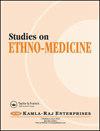Advantages of the Ultrasound Study for the Diagnosis of Osteoarthritis in the Knee, Ankle and Foot
Q2 Social Sciences
引用次数: 0
Abstract
Ultrasound in recent years has been shown to be a valuable study; however, it is necessary to carry out research that highlights the use of this method in order to identify predisposing factors for osteoarthritis, as well as to have a classification that allows determining the phase in which the disease is currently.The research proposes to determine the effectiveness of the ultrasound for the diagnosis and monitoring of osteoarthritis. The study was made non-experimental, cross-sectional, descriptive, evaluating 100 subjects in both lower limbs. The predisposing findings found were misalignment of the extensor mechanism and the presence of undiagnosed lesions. The damages most frequent related to osteoarthritis were: thinning and irregularity of articular cartilage and cortical bone, synovitis, marginal osteophytes; concluding that the technological advances in ultrasound allow to show initial degenerative changes and we can visualize predisposing factors for this condition. *Address for correspondence: Dayneri León Valladares Ofragia 65, Las Palmas II, Arica, Chile Phone:+56951966235 E-mail:daynerileon1@gmail.com INTRODUCTION Osteoarthritis (OA) is a chronic degenerative joint disease, which has as its main characteristics, a degeneration progressive and loss of articular cartilage, subchondral bone, and involvement of synovial tissue, associated with changes in the peri-articular soft tissues (Mobasheri et al. 2017).With aging, the joint tissues are made less resistant to wear and begin to manifest as swelling, pain, and in many cases, loss of mobility of the joints. Changes occur in the soft tissues of the joints and the bones. This disease may correspond to a hereditary manifestation or inadequate habits during life. Osteoarthritis is one of the diseases benefited in its diagnosis by technological advances. In particular, the ultrasound (US) is gaining ground between other diagnostic imaging techniques in the study of osteoarthritis. Due to the high resolution shown, it can detect minimal alterations in the three articular structures predominantly affected by osteoarthritis: articular cartilage, synovial membrane, and subchondral bone (Vlychou et al. 2009). Cetina (2017) emphasizes that ultrasound allows the detection and quantification of joint effusion, the presence of thickening of the synovium and small bone erosions, although these cannot be visible by conventional radiography. He says that this means of diagnosis allows adequate evaluation of peri-articular and extra-articular structures such as tenosynovitis, calcifications, cysts, among others. The research carried out by Podlipská et al. (2017) point that the sonographic study allows identify the changes in the structure of the articular cartilage in patients with osteoarthritis. In addition, they make reference to the relationship between these changes and the presence of accompanying clinical manifestations. Acevedo et al. (2012) demonstrated in their study that before the appearance of clinical manifestations, internal modifications (changes of degenerative aspects in articular and per articular structures) were exposed in elderly patients. Unfortunately, despite technological advances in imaging and its use in the diagnosis and follow-up of conditions such as osteoarthritis, the researchers believe it is necessary to carry out research to evaluate the applicability of the sonographic study in the identification of initial Ethno Med, 12(3): 146-153 (2018) DOI: 10.31901/24566772.2018/12.03.561 2018 © Kamla-Raj 2018 OSTEOARTHRITIS DIAGNOSTIC ULTRASOUND 147 osteoarthritic changes or factors that predispose to the degeneration of the peri-articular structures of the knee, ankle and foot. In the same way, the researchers think that a classification of osteoarthritis should be considered from the sonographic point of view. This has led researchers to arrive at the following objectives:超声研究在膝、踝、足骨关节炎诊断中的优势
超声近年来已被证明是一项有价值的研究;然而,有必要开展研究,突出这种方法的使用,以确定骨关节炎的易感性因素,以及有一个分类,允许确定疾病目前所处的阶段。本研究旨在确定超声诊断和监测骨关节炎的有效性。该研究是非实验性的、横断面的、描述性的,评估了100名受试者的双下肢。易感的发现是伸肌机制的错位和未诊断病变的存在。与骨关节炎相关的最常见的损伤是:关节软骨和皮质骨变薄和不规则,滑膜炎,边缘骨赘;结论是,超声技术的进步可以显示最初的退行性变化,我们可以看到这种情况的诱发因素。*通信地址:Dayneri León Valladares Ofragia 65, Las Palmas II, Arica, Chile电话:+56951966235 E-mail:daynerileon1@gmail.com骨关节炎(OA)是一种慢性退行性关节疾病,其主要特征是关节软骨、软骨下骨的退行性进展和丧失,并累及滑膜组织,与关节周围软组织的变化有关(Mobasheri et al. 2017)。随着年龄的增长,关节组织的耐磨性降低,开始表现为肿胀、疼痛,在许多情况下,关节失去活动能力。关节和骨骼的软组织会发生变化。这种疾病可能与遗传表现或生活习惯不良有关。骨关节炎是技术进步使其诊断受益的疾病之一。特别是,超声(US)在骨关节炎的研究中,在其他诊断成像技术之间取得了进展。由于显示的高分辨率,它可以检测主要受骨关节炎影响的三个关节结构的微小变化:关节软骨、滑膜和软骨下骨(Vlychou等,2009)。Cetina(2017)强调,超声可以检测和量化关节积液、滑膜增厚和小骨侵蚀的存在,尽管这些不能通过常规x线摄影看到。他说,这种诊断方法可以充分评估关节周围和关节外的结构,如腱鞘炎、钙化、囊肿等。podlipsk等人(2017)的研究指出,超声研究可以识别骨关节炎患者关节软骨结构的变化。此外,他们还提到了这些变化与伴随临床表现之间的关系。Acevedo等人(2012)的研究表明,在临床表现出现之前,老年患者的内部改变(关节和每关节结构的退行性方面的改变)已经暴露出来。不幸的是,尽管成像技术及其在骨关节炎等疾病的诊断和随访中的应用取得了进步,但研究人员认为有必要开展研究来评估超声检查在识别初始Ethno Med中的适用性,12(3):146-153 (2018)DOI:10.31901/24566772.2018/12.03.561 2018©Kamla-Raj 2018骨关节炎诊断超声147骨关节炎改变或易导致膝关节、脚踝和足关节周围结构退变的因素。同样,研究人员认为骨关节炎的分类应该从超声的角度来考虑。这导致研究人员达到以下目标:
本文章由计算机程序翻译,如有差异,请以英文原文为准。
求助全文
约1分钟内获得全文
求助全文
来源期刊

Studies on Ethno-Medicine
Social Sciences-Cultural Studies
CiteScore
0.50
自引率
0.00%
发文量
13
期刊介绍:
Studies on Ethno-Medicine is a peer reviewed, internationally circulated journal. It publishes reports of original research, theoretical articles, timely reviews, brief communications, book reviews and other publications in the interdisciplinary field of ethno-medicine. The journal serves as a forum for physical, social and life scientists as well as for health professionals. The transdisciplinary areas covered by this journal include, but are not limited to, Physical Sciences, Anthropology, Sociology, Geography, Life Sciences, Environmental Sciences, Botany, Agriculture, Home Science, Zoology, Genetics, Biology, Medical Sciences, Public Health, Demography and Epidemiology. The journal publishes basic, applied and methodologically oriented research from all such areas. The journal is committed to prompt review, and priority publication is given to manuscripts with novel or timely findings, and to manuscript of unusual interest. Further, the manuscripts are categorised under three types, namely - Regular articles, Short Communications and Reviews. The researchers are invited to submit original papers in English (papers published elsewhere or under consideration elsewhere shall not be considered).
 求助内容:
求助内容: 应助结果提醒方式:
应助结果提醒方式:


